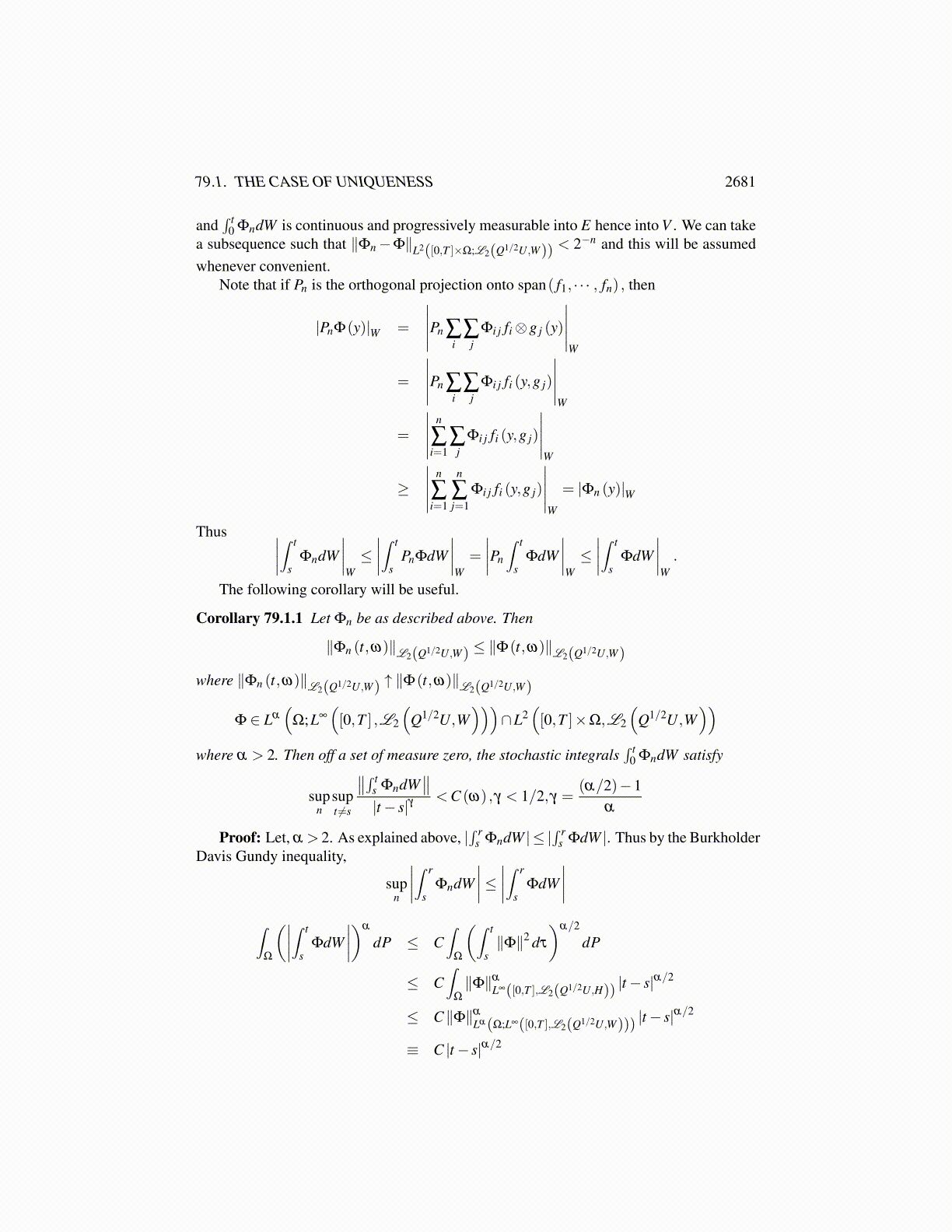
Chapter 79
Including Stochastic Integrals79.1 The Case of Uniqueness
You can include stochastic integrals in the above formulation. In this section and from nowon, we will assume that W is a Hilbert space because the stochastic integrals featured herewill have values in W and the version of the stochastic integral to be considered here willbe the Ito integral. Here is a brief review of this integral.
Let U be a separable real Hilbert space and let Q : U →U be self adjoint and nonnega-tive. Also H will be a separable real Hilbert space. L2
(Q1/2U,H
)will denote the Hilbert
Schmidt operators which map Q1/2U to H. Here Q1/2U is the Hilbert space which has aninner product given by
(y,z)≡(
Q−1/2y,Q−1/2z)
where Q−1/2y denotes x such that Q1/2x = y and out of all such x, this is the one whichhas the smallest norm. It is like the Moore Penrose inverse in linear algebra. Then one candefine a stochastic integral ∫ t
0ΦdW
where Φ ∈ L2([0,T ]×Ω;L2
(Q1/2U,H
))where here Φ is progressively measurable with
respect to the filtration Ft . This filtration will be
Ft = ∩p>tσ (W (r)−W (s) : 0≤ s≤ r ≤ p)
The horizontal line indicates completion. The symbol
σ (W (r)−W (s) : 0≤ s≤ r ≤ p)
indicates the smallest σ algebra for which all those increments are measurable. Here W (t)is a Wiener process which has values in U1, some other Hilbert space, maybe H. There is aHilbert Schmidt operator J ∈L2
(Q1/2U,U1
)such that W (t) = ∑
∞i=1 ψ i (t)Jei where here
the ψ i are independent real Wiener processes. You could take U,U1 to both be H. This isfollowing [108]. Then the stochastic integral has the following properties.
1.∫ t
0 ΦdW is a martingale with respect to Ft with values in H, equal to 0 when t = 0.
2. One has the Ito isometry
E
(∥∥∥∥∫ t
0ΦdW
∥∥∥∥2
H
)=∫ t
0∥Φ∥2
L2ds
3. One can localize as follows. For τ a stopping time,∫ t∧τ
0ΦdW =
∫ t
0X[0,τ]ΦdW
2681